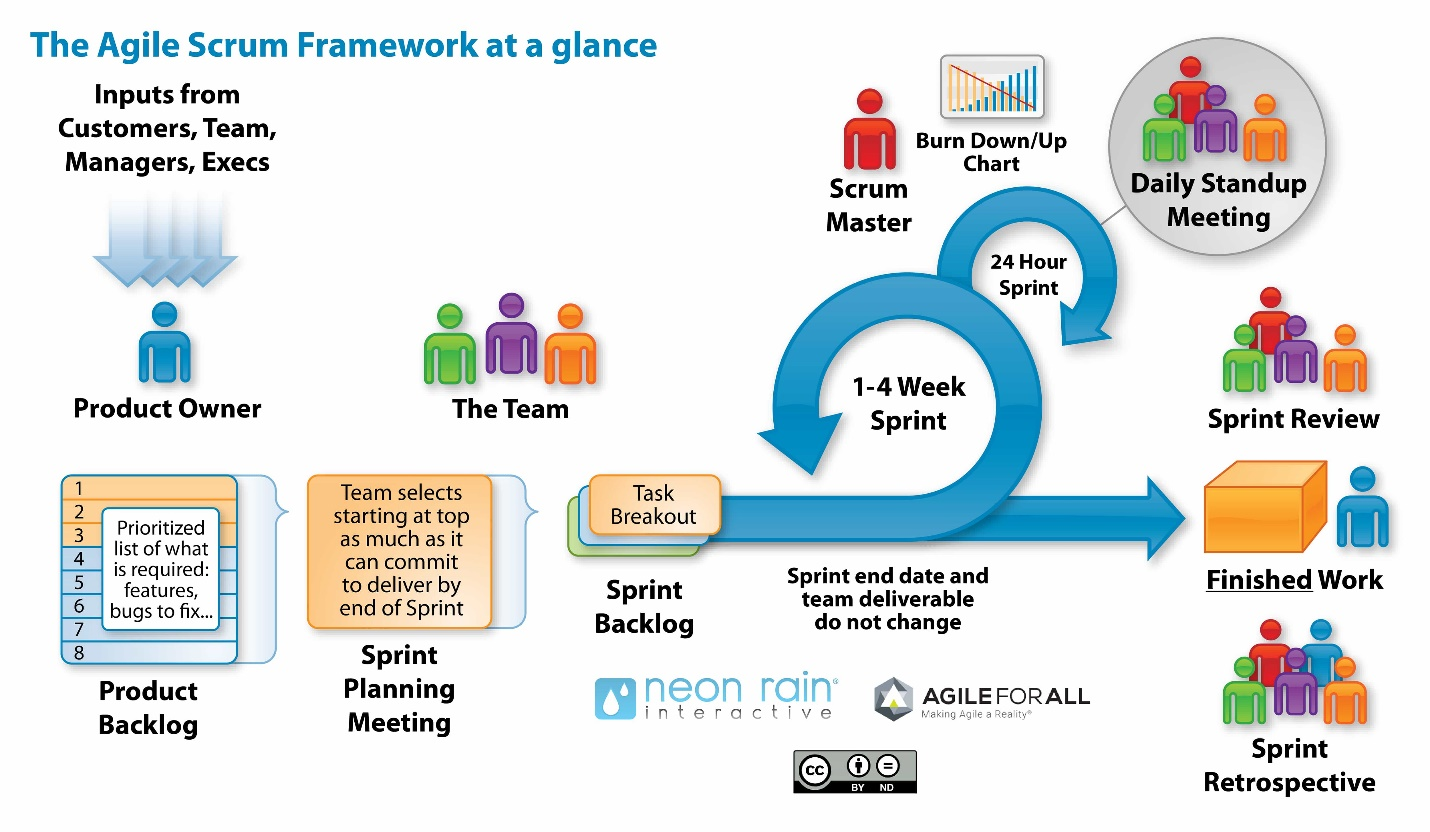What is Scrum?
- A scrum is a method of restarting play in rugby that involves players packing closely together with their heads down and attempting to gain possession of the ball.
- Scrum is an agile process model which is used for developing the complex software systems.
- It is a lightweight process framework.
- Lightweight means the overhead of the process is kept as small as possible in order to maximize the productivity.

(Figure: Scrum framework)
Backlog
- It is a prioritized list of project requirements or features that must be provided to the customer.
- The items can be included in the backlog at any time.
- The product manager analyses this list and updates the priorities as per the requirements.
Sprint
- These are the work units that are needed to achieve the requirements mentioned in the backlogs.
- Typically the sprints have fixed duration or time box (of 2 to 4 weeks, 30 days).
- Change are not introduced during the sprint.
- Thus sprints allow the team members to work in stable and short-term environment.
Scrum Meetings
- There are 15 minutes daily meetings to report the completed activities, obstacles and plan for next activities.
- Following are three questions that are mainly discussed during the meetings.
- What are the tasks done since last meeting?
- What are the issues that team is facing?
- What are the next activities that are planned?
- The scrum master leads the meeting and analyses the response of each team member.
- Scrum meeting helps the team to uncover potential problems as early as possible
- It leads to “knowledge socialization” & promotes “self-organizing team structure”
Demo
- Deliver software increment to customer
- Implemented functionalities are demonstrated to the customer
Merits of SCRUM:
Scrum can help teams complete project deliverables quickly and efficiently:
- Scrum ensures effective use of time and money
- Large projects are divided into easily manageable sprints
- Developments are coded and tested during the sprint review
- Works well for fast-moving development projects
- The team gets clear visibility through scrum meetings
- Scrum, being agile, adopts feedback from customers and stakeholders
- Short sprints enable changes based on feedback a lot more easily
- The individual effort of each team member is visible during daily scrum meetings
Demerits of SCRUM:
Nothing is perfect, and the Scrum methodology is no exception. In some cases, Scrum is combined with other project management techniques that can help resolve some of these drawbacks:
- Scrum often leads to scope creep, due to the lack of a definite end-date
- The chances of project failure are high if individuals aren't very committed or cooperative
- Adopting the Scrum framework in large teams is challenging
- The framework can be successful only with experienced team members
- Daily meetings sometimes frustrate team members
- If any team member leaves in the middle of a project, it can have a huge negative impact on the project
- Quality is hard to implement, until the team goes through aggressive testing process